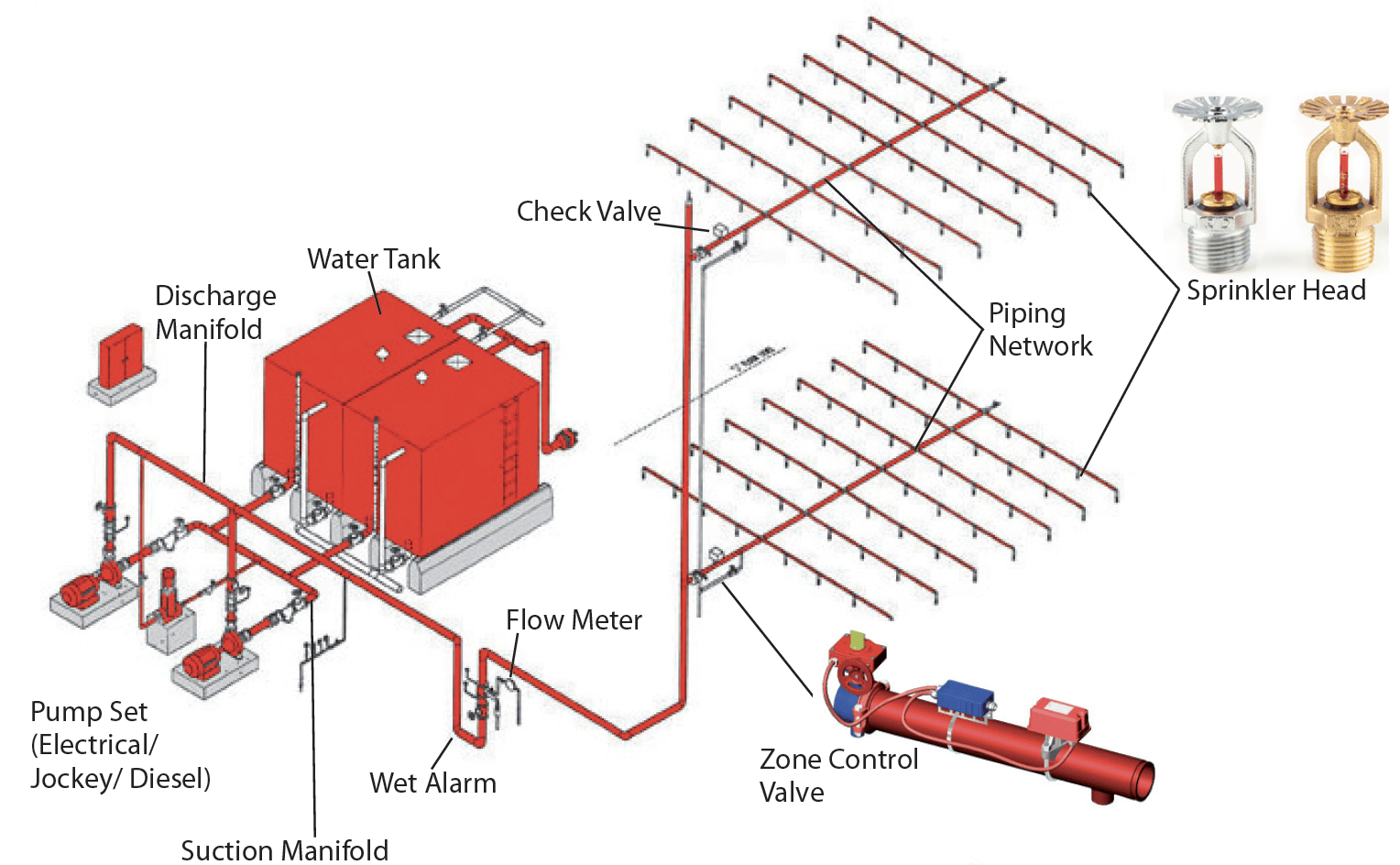Emergency preparedness is a top priority for building managers. Important factors of fire safety are sprinkler systems and emergency response training. While sprinkler systems prevent fires from spreading, trained fire brigades ensure swift action.
How Do Automatic Fire Suppression Systems Work?
Advanced fire control technologies activate in emergencies by dispersing water when heat activates them. Each sprinkler head responds individually, ensuring precise fire suppression.

Critical aspects of fire sprinklers include:
- Fire response heads: Deliver water to extinguish flames.
- Pipe setups: Maintains water pressure.
- Control systems: Manage sprinkler operations.
- Connected water supply: Supports continuous flow.
The Importance of Fire Brigade Training
Fire brigade training educates personnel to act quickly during crises. Emergency skills development emphasize teamwork, maximizing safety during unexpected events.

Primary components of fire brigade training include:
- Awareness building: Identifying safety concerns.
- Evacuation procedures: Reducing evacuation time.
- Fire suppression strategies: Training with extinguishers.
- Collaborative response skills: Enhancing communication.
Qual a quantidade de sprinklers por m2?Qual é a NBR de sprinkler?
The Synergy Between Fire Suppression and Emergency Training
Using automatic fire suppression with fire team readiness enhances fire protection efforts. Automatic systems suppress flames quickly, while prepared teams handle complex scenarios.

Pairing technology with skills creates a safer environment for homes, offices, and large-scale operations alike.
Why Sprinkler Systems and Emergency Preparedness Are Essential
Equipping your property with fire suppression technology and providing fire brigade training ensures a safer future. When used in combination, these measures create a powerful defense.
Start improving your fire safety today by installing a sprinkler system and organizing emergency response drills. Preparedness is the key to protection!